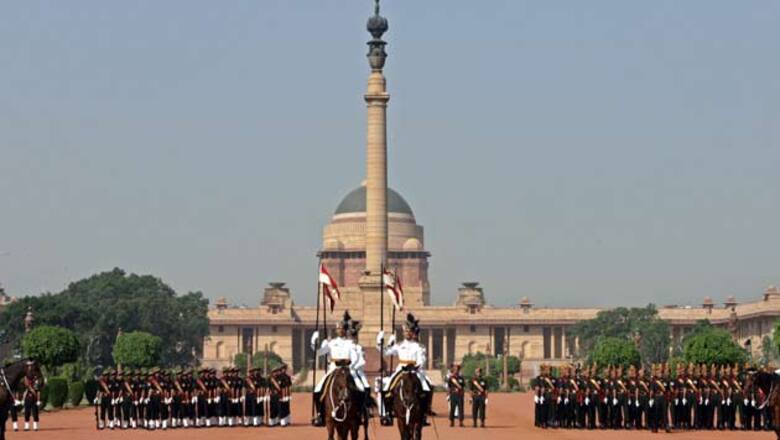
views
Mukesh Ambani's vaastu-compliant building is 550 feet tall and has about 400,000 square feet of floor space, with residential and guest accommodation, maintenance levels, a ballroom (wall-to-wall crystal chandeliers), entertainment stages and theatres, gyms, six parking levels, a garden level, a swimming pool, and that Mumbai necessity, an ice room (complete with snow flurries). With even the lower estimates north of a billion dollars (most media seems to be fixated on $2 billion, though that figure has been officially denied), it is clearly the most expensive home in the world. Or is it?
While Mr. Ambani has clearly left careful spenders like Bill Gates and Lakshmi Mittal eating his dust, his new pied-à-terre isnt quite the most expensive in the world. A certain Elizabeth Windsors home in London is a bit larger, with 830,000 square feet floor space. Its rather better known as Buckingham Palace.
Closer home, theres one residence thats much larger: Once the Viceregal Palace, now the home of our president, Rashtrapati Bhavan. The presidential estate, with its Mughal Garden, nine tennis courts, polo ground, 14-hole golf course and cricket ground, occupies over 350 acres in the centre of Delhi.
Rashtrapati Bhavan took 17 years, 700 million bricks and 3 million cubic feet of stone to build. It was finished in 1929 and inaugurated in 1931.
It cost Rs. 14 million to build, which in todays money, assuming a conservative 6 percent inflation rate over 80 years, would be Rs. 1.5 billion. Or roughly $35.68 million.
It is difficult to estimate the land value; almost all the properties in Lutyens Delhi are owned by the government and never come on the market. But going by the last major sale, the land value of the estate would be around Rs. 46,261 crore (almost $10.5 billion).
It has 340 rooms, four levels, and a floor area of 200,000 square feet. It is the biggest presidential home in the world.
The Durbar Hall is used for important ceremonies like the swearing in of prime ministers, governments and MPs. It contains a 2-tonne chandelier. There are also state dining halls, state sitting rooms, and a ballroom.
The architectural style of the building is a mix of European and Indian. It has columns and courtyards, stone balconies, chhatris, jaalis and chhajjas, a massive cast iron gate, Indian temple bells, and over it all, a huge dome.
Its architect was Edwin Landseer Lutyens, who also designed what is now the priciest part of Delhi, which is, informally, named after him. The chief engineer was Hugh Keeling, a contractor named Haroun-al-Rashid carried out most of the building work, and the forecourt was built by father-and-son Sujan and Sobha Singh.
The President does not live in what was designed to be the viceroys chambers. Indias last governor-general, C. Rajagopalachari, is said to have found those rooms too fancy for his modest tastes. Instead, he chose to occupy one of the guest sections, a tradition that has since been followed by Rajendra Prasad, our first President, and all his successors. The former viceregal apartments now host visiting heads of state.



















Comments
0 comment